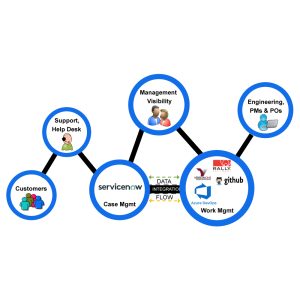Customer expectations have evolved dramatically. They now demand instant, accurate, and personalized support across various channels. Traditional customer service models often struggle to meet these demands, leading to customer dissatisfaction and increased operational costs.
IBM Watson Assistant emerges as a powerful AI-driven solution designed to revolutionize customer service by deploying intelligent chatbots capable of understanding natural language, learning from interactions, and providing consistent support across multiple platforms.
Understanding IBM Watson Assistant
IBM Watson Assistant is an AI-powered virtual agent that provides customers with fast, consistent, and accurate answers across any messaging platform, application, device, or channel. Using AI and natural language processing (NLP), Watson Assistant learns from customer conversations, improving its ability to resolve issues the first time while removing the frustration of long wait times and unhelpful chatbots.
Key Features of IBM Watson Assistant
1. Advanced Natural Language Processing (NLP)
Watson Assistant leverages sophisticated NLP capabilities to understand and process customer queries in natural language, enabling more human-like interactions.
2. Contextual Understanding
The assistant maintains context throughout the conversation, allowing for more coherent and relevant responses, enhancing the customer experience.
3. Multi-Channel Deployment
Watson Assistant can be integrated across various platforms, including websites, mobile apps, messaging platforms like Slack and Facebook Messenger, and even voice channels, ensuring consistent support wherever customers are.
4. Seamless Integration with Backend Systems
It integrates effortlessly with existing business systems, supporting complex workflows and processes, thereby reducing complexity and accelerating value delivery.
5. Analytics and Insights
The platform provides robust analytics dashboards and extensive reports to track conversation performance, helping businesses understand customer needs and improve service quality.
Benefits of Implementing IBM Watson Assistant
1. Enhanced Customer Satisfaction
By providing quick and accurate responses, Watson Assistant improves the overall customer experience, leading to higher satisfaction rates.
2. Operational Efficiency
Automating routine inquiries reduces the workload on human agents, allowing them to focus on more complex tasks, thereby increasing efficiency.
3. Cost Reduction
With the ability to handle a large volume of queries simultaneously, businesses can reduce operational costs associated with customer support.
4. Scalability
Watson Assistant’s AI-powered automation reduces costs and increases efficiency across IT operations, making it suitable for businesses of all sizes.
5. Improved First-Call Resolution Rates
The assistant’s ability to understand and resolve issues promptly leads to higher first-call resolution rates, enhancing customer trust and loyalty.
Real-World Applications
1. Banking and Financial Services
Banks use Watson Assistant to provide customers with instant support for account inquiries, loan applications, and transaction issues, improving service efficiency.
2. Healthcare
Healthcare providers deploy the assistant to schedule appointments, provide medical information, and handle patient queries, enhancing patient engagement and care.
3. Retail
Retailers utilize Watson Assistant to assist customers with product information, order tracking, and returns, leading to improved customer satisfaction and loyalty.
4. Telecommunications
Telecom companies implement the assistant to troubleshoot technical issues, manage service plans, and answer billing questions, reducing call center volumes.
Getting Started with IBM Watson Assistant
Implementing Watson Assistant involves several steps:
- Define Objectives: Identify the specific customer service challenges you aim to address.
- Design Conversation Flows: Map out potential customer interactions and design appropriate responses.
- Integrate with Existing Systems: Ensure seamless integration with your current CRM, databases, and other backend systems.
- Train the Assistant: Use historical data and anticipated queries to train the assistant for accurate responses.
- Deploy Across Channels: Implement the assistant on your website, mobile apps, and other customer touchpoints.
- Monitor and Optimize: Continuously analyze performance metrics and customer feedback to refine the assistant’s capabilities.
IBM Watson Assistant is transforming customer service by providing intelligent, efficient, and scalable chatbot solutions. Its advanced AI capabilities enable businesses to meet growing customer expectations while optimizing operational efficiency.




